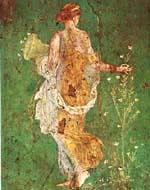
The area later occupied by the Roman town of Stabiae had been inhabited by Italian populations since VIII century b.C., as can be deduced from the necropolis discovered in the last few years; archeologists presume that one or more similar centres were founded, linked to the the others existing in the adjoining Sarno valley, and with Nucera, which here found its natural passage to the sea. But scholars still do not know in the “Samnite period” where the fortified centre rose, which was then destroyed by Silla in 89 AC during the “Social War”. The town was not rebuilt on the site of its ruins and the Roman Stabiae was mainly composed of large, luxurious villas, scattered throughout the region, above all on the brow of the Varano hill: in fact this became one of the most exclusive and residential areas of the great Roman families. The archeological excavations began thanks to the king Charles of Bourbon and indeed they brought a fair number of villas to light, among the finest of ancient times. In the traditional plan of that Roman period, the villas had a residential area which stretched out on the brow of the hill, with a sea view, and a rustic and service area behind it. The planimetrical development adapted itself to the land and the most favourable orientation so that a varied, articulate construction resulted, often with more than one floor. Gardens and peristyles played an important part in the villas and they were carefully planned by an architect to ensure that they were wide and rich, adorned with pools and fountains, with small trees and plants spread throughout. Besides the excavations have sometimes made it possible to find out their exact species. Like in the San Marco Villa there were very large private thermal bathes and large drawing-rooms. These villas had a particularly high artistic level, not only as regards the architecture, but also due to the wall paintings and stuccoes mostly executed in I A.C., very often of superior quality to similar Pompeian decorations. In addition, for the fittings recovered there, including the obsidian goblets ornated with scenes in gold polychrome and minute stone objects, is clear the residential level of this town.